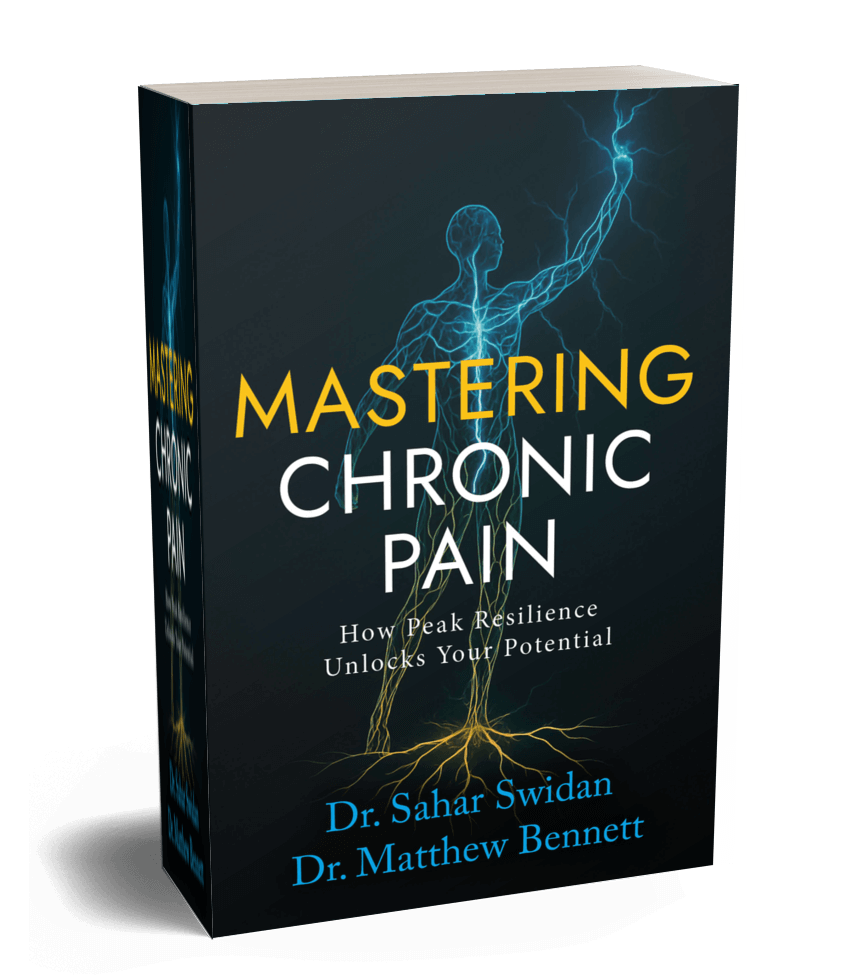In an era where chronic pain affects over 50 million Americans and traditional pain management approaches have led us into an opioid crisis, “Mastering Chronic Pain: How Peak Resilience Unlocks Your Potential” emerges as a groundbreaking departure from conventional wisdom. Authors Dr. Matthew Bennett, an orthopedic spine surgeon and functional medicine expert, and Dr. Sahar Swidan, a world-renowned clinical pharmacist and pain specialist, have crafted what may be the most comprehensive patient-centered guide to chronic pain recovery available today.
A Personal Genesis Born from Crisis
The book’s origin story is as compelling as its content. Originally conceived in 2018 as an educational resource for healthcare providers, the authors pivoted during the pandemic to address the real audience who needed this information most: patients themselves. This shift from clinician-focused education to patient empowerment reflects a broader recognition that healing must be driven by the individual, not imposed by the medical system.
The authors’ combined expertise, Bennett’s two decades in orthopedic surgery, merged with Swidan’s pharmaceutical precision and functional medicine insight, creates a unique perspective that bridges traditional medical training with cutting-edge pain science. Their previous collaboration on “Advanced Therapeutics in Pain Medicine” established their credibility among healthcare providers, but this new work demonstrates their commitment to democratizing advanced pain management strategies.
The Biopsychosocial Revolution
At its core, the book champions the biopsychosocial model of pain, a framework that treats chronic pain as an interconnected experience involving biological, psychological, and social factors rather than a simple mechanical problem. This isn’t merely theoretical; the authors weave this concept throughout compelling patient narratives that illustrate how pain reshapes entire lives.
Emma, the passionate social studies teacher whose back pain gradually stole her professional identity; Maria, the chef whose wrist injury threatened her culinary career; Lisa, who discovered that addressing her nervous system dysregulation was key to recovery, these aren’t composite sketches but detailed case studies that demonstrate the model’s real-world application. Each story reveals how chronic pain creates cascading effects across multiple body systems, relationships, and psychological patterns.
The Resilience Code: Personalized Medicine Made Accessible
Perhaps the book’s most innovative contribution is the concept of the “Resilience Code”, a personalized framework that helps readers identify their unique pain drivers and develop targeted interventions. Rather than offering one-size-fits-all solutions, Bennett and Swidan guide readers through a systematic assessment of their biological, psychological, and social resilience.
This approach acknowledges what many chronic pain sufferers have discovered through frustrating trial and error: what works for one person may be ineffective or even harmful for another. The Resilience Code framework empowers readers to become active participants in their healing journey, making informed decisions based on their individual circumstances rather than following generic protocols.
Scientific Rigor Meets Practical Application
The authors successfully balance scientific depth with accessibility, explaining complex concepts like neuroplasticity, the default mode network, and hormonal influences on pain pathways without overwhelming lay readers. Their discussion of how chronic pain rewires the brain through the anterior cingulate cortex and prefrontal cortex provides crucial context for why psychological interventions aren’t “just mental exercises” but physiologically necessary components of recovery.
The book’s treatment of neuroplasticity is particularly noteworthy. Rather than presenting it as a miracle cure, the authors frame it as a tool requiring consistent, intentional practice—much like physical therapy for the brain. This realistic approach helps set appropriate expectations while maintaining hope for meaningful change.
Beyond Symptom Management
Where “Mastering Chronic Pain” truly distinguishes itself is in its pivot of the “management” paradigm that has dominated chronic pain treatment. Instead of teaching readers to cope with unchangeable suffering, Bennett and Swidan present a vision of genuine healing that goes beyond symptom reduction to address root causes across multiple body systems.
Their discussion of biological resilience covers everything from sleep optimization and anti-inflammatory nutrition to breath work and movement, but always within the context of nervous system regulation rather than as isolated interventions. This systems thinking prevents the fragmented approach that often characterizes chronic pain treatment.
Addressing the Whole Person
The book’s treatment of psychological and social resilience is equally sophisticated. Rather than dismissing these aspects as secondary concerns, the authors demonstrate how isolation, negative thought patterns, and relationship strain can perpetuate pain cycles through measurable biological pathways. Their exploration of social resilience as a “biological necessity” rather than a luxury reflects cutting-edge research on the health impacts of social connection.
The chapter on rebuilding relationships affected by chronic pain is particularly valuable, offering practical guidance for both patients and their support systems. The story of Raj and his wife Meera illustrates how chronic pain can strain even the strongest relationships while providing a roadmap for restoration.
Strengths and Considerations
The book’s greatest strength lies in its integration of multiple disciplines into a coherent, actionable framework. The authors avoid the common trap of oversimplifying complex issues while maintaining practical applicability. Their use of real patient stories provides emotional resonance without becoming manipulative or overly dramatic.
However, readers seeking quick fixes or magic bullets may find the approach demanding. The Resilience Code requires sustained effort, self-reflection, and often significant lifestyle modifications. Some may also find the scientific explanations dense, despite the authors’ efforts to maintain accessibility.
The book’s emphasis on personal responsibility, while empowering, may feel overwhelming to readers in acute crisis or those with limited resources. The authors acknowledge these limitations but could have provided more guidance for readers facing significant external constraints.
A Paradigm Shift in Progress
“Mastering Chronic Pain” represents more than a self-help book, it’s a manifesto for a fundamental shift in how we understand and address chronic pain. By moving beyond the outdated acute care model and embracing the complexity of chronic conditions, Bennett and Swidan offer hope without false promises and science without intimidation.
The book’s timing is particularly significant as healthcare systems worldwide grapple with the limitations of traditional pain management approaches[5]. As patients increasingly seek alternatives to pharmaceutical interventions, this work provides a scientifically grounded framework that respects both the reality of suffering and the possibility of transformation.
Final Verdict
“Mastering Chronic Pain: How Peak Resilience Unlocks Your Potential” succeeds as both an educational resource and a practical guide for chronic pain recovery. While it demands more from readers than passive consumption of information, it offers something far more valuable: a pathway to reclaiming agency in the face of persistent suffering.
For chronic pain sufferers tired of being told to “learn to live with it,” healthcare providers seeking comprehensive alternatives to pharmaceutical approaches, and anyone interested in the intersection of neuroscience, psychology, and healing, this book represents an essential contribution to the literature. It’s not just about managing pain, it’s about rediscovering what it means to thrive despite it.
Rating: ★★★★★
This review reflects the book’s potential to fundamentally change how readers approach chronic pain recovery, offering hope grounded in science and practical tools refined through decades of clinical experience.













